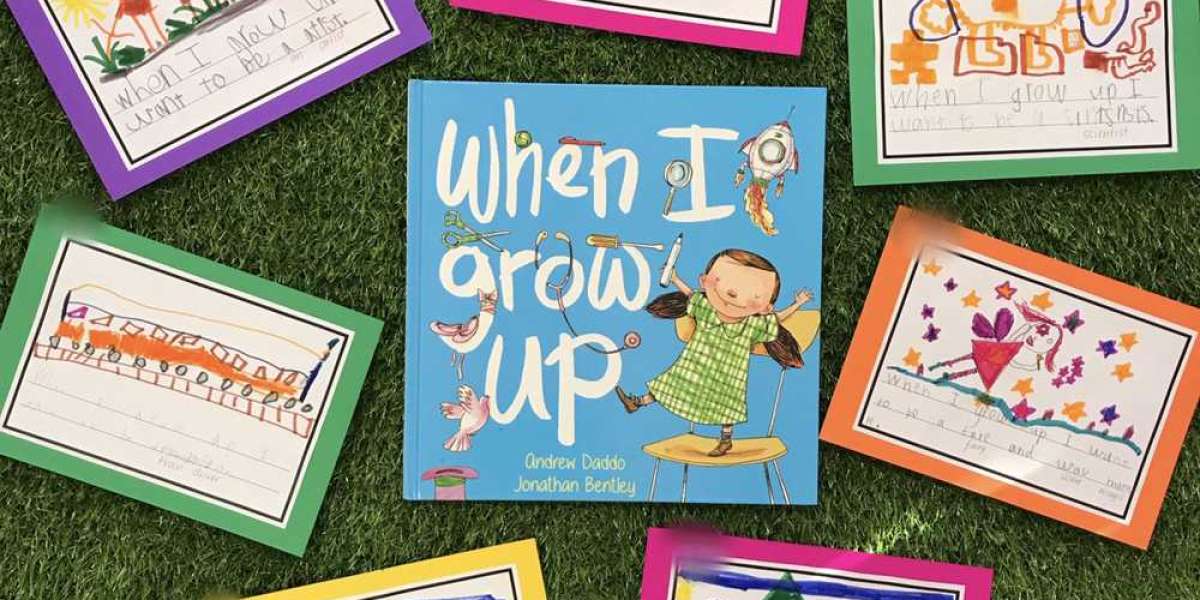Introduction
In today’s digital age, encouraging creativity and imagination in children is more important than ever. One of the most effective ways to foster these qualities is through DIY children's book projects. Creating their own stories allows children to explore their imagination, develop their storytelling abilities, and build confidence in their creative talents. Whether they are writing a story, illustrating it, or binding the book themselves, each step in the process provides valuable learning experiences. This article will explore various DIY children's book projects that can inspire creativity and imagination in young minds.
The Power of Storytelling
Storytelling is a fundamental aspect of human culture, and it plays a crucial role in a child's development. When children create their own stories, they engage in a process of exploring their thoughts, emotions, and ideas. This act of creation helps them make sense of the world around them and express their understanding of it. DIY children's book projects are a perfect avenue for this creative exploration, as they allow children to bring their stories to life in a tangible form.
Through storytelling, children can explore different perspectives, experiment with language, and develop a narrative structure. They learn how to craft characters, build plots, and convey emotions through words and pictures. This process not only enhances their literacy skills but also boosts their cognitive and emotional development. Moreover, when children see their stories come to life in a book, it gives them a sense of accomplishment and pride, reinforcing their confidence and encouraging further creativity.
Developing Characters
Creating characters is often one of the most exciting parts of a DIY children's book project. Characters are the heart of any story, and developing them allows children to delve deep into their imagination. Whether the characters are based on real people, animals, or completely fantastical beings, children have the freedom to create personalities, traits, and backstories that are entirely their own.
When working on character development, children can start by thinking about the kind of story they want to tell. Is it an adventure, a mystery, or a tale of friendship? The type of story will help guide the creation of characters that fit the narrative. Encouraging children to think about their characters’ motivations, strengths, weaknesses, and how they interact with others can add depth to their CHILDREN’S BOOK EDITING SERVICES in usaFor instance, a brave knight might have a fear of heights, or a curious cat might lead its friends on an unexpected adventure.
Illustrating characters is another aspect that adds to the fun and creativity of DIY children's book projects. Children can use different mediums such as crayons, markers, or even digital tools to bring their characters to life visually. This not only enhances their artistic skills but also helps them connect more deeply with their creations. The process of drawing and refining their characters can lead to a better understanding of visual storytelling and the importance of consistency in character design.
Crafting the Plot
Once characters are developed, the next step is crafting the plot. The plot is the sequence of events that make up the story, and it is crucial to keeping readers engaged. For children, creating a plot allows them to explore cause and effect, problem-solving, and the consequences of actions. It also encourages them to think logically and organize their ideas coherently.
A good plot typically begins with a problem or a goal that the characters must address. This could be anything from finding a lost treasure to solving a mystery. The plot then follows the characters as they face challenges, make decisions, and ultimately reach a resolution. Encouraging children to think about how their characters will overcome obstacles can lead to creative problem-solving and critical thinking.
For younger children, simple plots with clear beginnings, middles, and ends are a great starting point. As they become more confident, they can experiment with more complex storylines, such as incorporating subplots or unexpected twists. Discussing different story structures, like the classic "hero's journey," can also help children understand how to build tension and maintain interest throughout their story.
Illustrating the Story
Illustrations are a vital part of children's books, and creating their own illustrations allows children to further express their creativity. Illustrating their stories helps children visualize the world they are creating and brings an additional layer of depth to their narratives. This process enhances their ability to communicate ideas visually and can be an enjoyable and fulfilling aspect of the book-making process.
Children can use a variety of materials for their illustrations, from traditional tools like pencils and paints to digital drawing programs. The choice of medium can depend on their interests and the resources available. Some children may prefer the tactile experience of drawing and painting, while others might be more interested in exploring digital art.
Illustrating a book also teaches children about the relationship between text and images. They learn how illustrations can complement and enhance the narrative, add emotional impact, and provide context for the story. For example, a picture of a stormy sky can set the mood for a dramatic scene, while a bright, sunny illustration can convey a sense of happiness and optimism. This understanding of visual storytelling is an important skill that can be applied in many areas of learning and creativity.
Binding the Book
The final step in the DIY children's book project is binding the book. This process gives children a sense of closure and accomplishment as they see their story take on a finished, professional appearance. There are various methods of binding that can be used, depending on the resources available and the age of the child.
For younger children, simple methods like stapling pages together or using ribbon to tie them can be effective and manageable. Older children might enjoy more complex techniques, such as creating a hardcover book using cardboard and fabric or learning how to stitch pages together using a needle and thread. Each method teaches children different skills and gives them a hands-on experience in bookmaking.
Binding the book also encourages children to take pride in their work. Holding a finished book that they have created from start to finish gives them a tangible reminder of their creativity and hard work. It can also inspire them to create more stories and books, fostering a lifelong love of storytelling and creativity.
Sharing the Finished Book
Once the book is complete, sharing it with others can be an incredibly rewarding experience for children. Whether they read it to family members, share it with friends, or even present it in a school project, this act of sharing allows them to receive feedback and appreciation for their efforts. It also teaches them the value of storytelling as a means of communication and connection.
Sharing their book can also open up discussions about the themes and ideas in their story. This can lead to deeper conversations about their thoughts and feelings, helping them develop their communication skills and emotional intelligence. Moreover, the positive reinforcement they receive from sharing their work can boost their confidence and motivate them to continue exploring their creative abilities.
Encouraging Creativity and Imagination
DIY children's book projects are more than just a fun activity; they are a powerful tool for encouraging creativity and imagination. Through the process of creating their own books, children learn to think critically, solve problems, and express themselves in unique ways. They gain confidence in their abilities and discover the joy of bringing their ideas to life.
These projects also provide a valuable opportunity for parents and educators to engage with children in meaningful, creative activities. By guiding them through the process and encouraging their ideas, adults can help children develop a lifelong love of storytelling and creativity. In a world where creativity and imagination are increasingly valued, these skills are essential for success and fulfillment.
Conclusion
DIY children's book projects are a wonderful way to inspire creativity and imagination in young minds. From developing characters to crafting plots, illustrating stories, and binding the final book, each step in the process offers valuable learning experiences. These projects not only enhance literacy and artistic skills but also build confidence and encourage critical thinking. By engaging in DIY children's book projects, children can explore their imaginations, express their ideas, and discover the joy of storytelling. The books they create will not only be treasured keepsakes but also a testament to their creativity and



